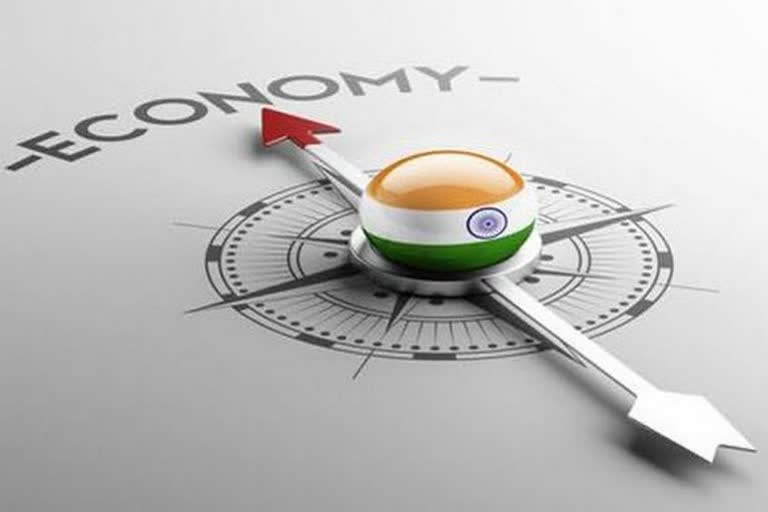Washington: Buoyed by an increase in public investment and incentives to boost manufacturing, India's economy is expected to grow by 8.3 per cent in the fiscal year 2021-22, less than the previous projection early this year before the country was hit by the second wave of the COVID-19 pandemic, the World Bank has said in its latest report.
World Bank Chief Economist for the South Asia Region Hans Timmer told the media here that when one looks at the high frequency data, they see that as a result of the second wave of the COVID-19 pandemic, the recovery paused, and some indicate that the recovery actually declined briefly.
We project for this fiscal year 8.3 per cent (growth rate for Indian economy) that is less than we projected early in the year before the health crisis caused by the second wave.
“Given the sharp contraction of the economy last year, it might not look like a lot, but in my view, that is actually very positive news, given the violent second wave and the severity of the health crisis,” he said on Thursday.
On March 31, the World Bank said India's real GDP growth for fiscal year 21/22 could range from 7.5 to 12.5 per cent in its latest South Asia Economic Focus report released ahead of the annual Spring meeting of the World Bank and the International Monetary Fund (IMF).
In April-May, India struggled with the second wave of the deadly coronavirus pandemic with more than 3,00,000 daily new cases, throwing hospitals and health system out of gear due to a shortage of medical oxygen and beds.
According to Timmer, what is remarkable and what is the positive part of that number is that the pause was short lived, and the hit on the economy was by far enough, not even comparable as large as a year earlier.
“That's how we ended up with 8.3 per cent growth,” he said.
“We still think that the situation is very uncertain internally and sometimes externally. We still use a very broad range of possible outcomes for the Indian economy, although the more we are progressing in the current year, the less the uncertainty is.
“But that range that we are using is seven-and-a-half to 12-and-a-half per cent we did it from the start of the pandemic, and you have to conclude now that we are at the lower end of that range, but that is totally due to the second wave in my view,” Timmer said.
Also Read: Moody's raises rating outlook to stable for 18 corporates, banks
That mitigated some of the impacts on the vulnerable parts of India. It is time now to shift gears and to start focusing on medium-term growth, he said, adding that India has already done some reforms during the crisis that go in that direction.
Observing that labour reforms and agricultural reforms are still debated at the moment, he said that they are going in a direction that the Bank thinks is necessary.
It is opening up parts of the economy, where there was unutilised potential, he said.
Timmer said that he is especially very interested in the labour reforms that attempt to create funds to set up social protection systems, not just for the people in the formal sector, but also for informal workers and for migrant workers.
“This is something that we have advocated for a long time that the social protection system has to become more universal,” he said.
“In India, there were a lot of short-term relief efforts but that's not sustainable. You'll need to put in place a solid system that covers most of India. These reforms are going in that direction. At the same time there's still a lot of work to be done,” Timmer said.
One of the main focuses of the latest World Bank report is to unleash the potential of the services sector where it is possible to make services the driver of development in India, and there is still an unfinished agenda, because the current formal services sector is still very regulated, and very protected to international competition.
The latest South Asia Economic Focus titled ‘Shifting Gears: Digitization and Services-Led Development' projects the region to grow by 7.1 per cent in 2021 and 2022.
While the year-on-year growth remains strong in the region, albeit from a very low base in 2020, the recovery has been uneven across countries and sectors.
South Asia's average annual growth is forecast to be 3.4 per cent over 2020-23, which is 3 percentage points less than it was in the four years preceding the pandemic.
India's economy, South Asia's largest, is expected to grow by 8.3 per cent in the fiscal year 2021-22, aided by an increase in public investment and incentives to boost manufacturing.
In Bangladesh, continued recovery in exports and consumption will help growth rates pick up to 6.4 per cent in fiscal year 2021-22. In Maldives, the GDP is projected to grow by 22.3 per cent in 2021 as tourism numbers recover, the bank said in a report.
“The pandemic has had profound impacts on South Asia's economy. Going forward, much will depend on the speed of vaccination, the possible emergence of new COVID variants, as well as any major slowdown in the momentum of global growth,” said Hartwig Schafer, World Bank Vice President for the South Asia Region.
“While short-term recovery is important, policymakers should also seize the opportunity to address deep-rooted challenges and pursue a development path that is green, resilient and inclusive,” he said in a statement.
COVID-19 has left long-term scars on the region's economy, the impacts of which can last well into the recovery.
Many countries experienced lower investment flows, disruptions in supply chains, and setbacks to human capital accumulation, as well as substantial increases in debt levels.
The pandemic is estimated to have caused 48 to 59 million people to become or remain poor in 2021 in South Asia, it added.
PTI



